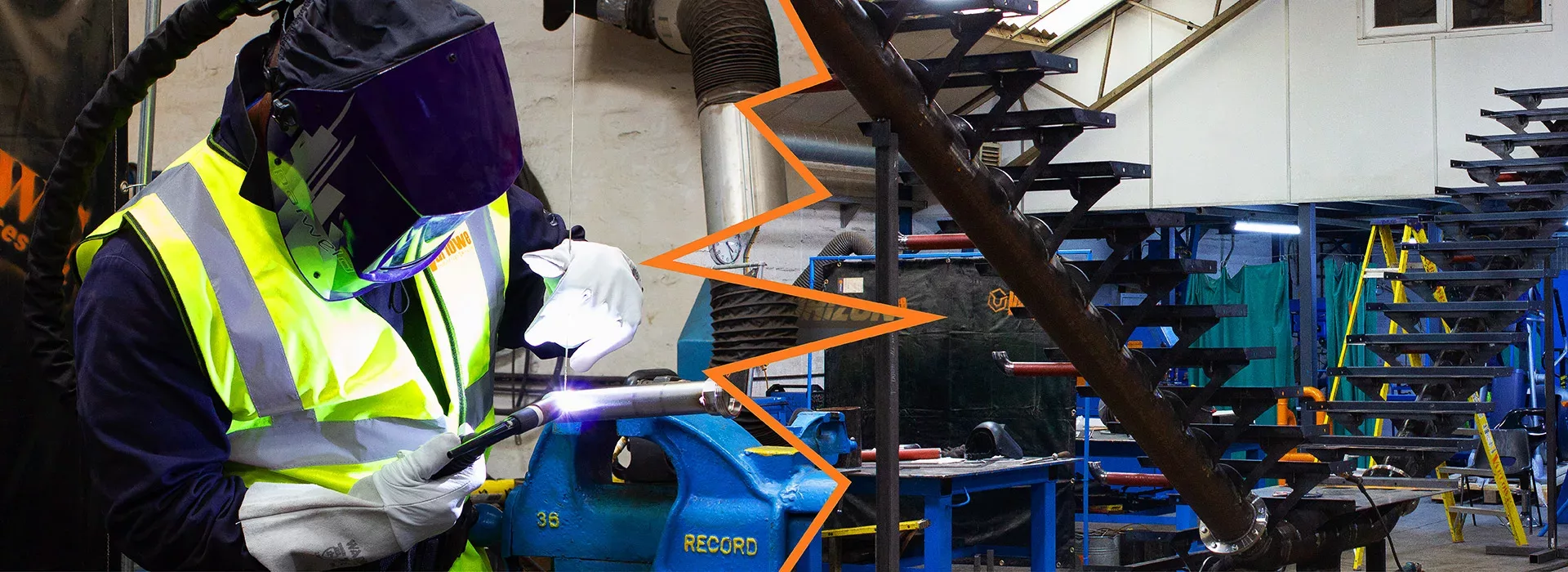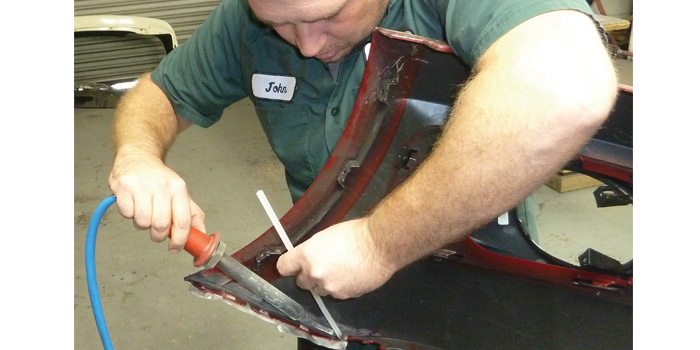Complete guide at welding penetration issues and Montana Mobile Welding and Repair Belgrade’s fixes
Everything about Welding: Secret Insights Into Techniques and Best Practices for Success
Welding includes a selection of strategies, each suited for specific materials and applications. Recognizing these approaches, such as GMAW, SMAW, and TIG, is crucial for attaining excellent results. The ideal devices and security techniques can not be neglected. As prep work and troubleshooting play critical functions in the welding process, grasping these components can greatly enhance the quality of the final product. What are the key variables that guarantee an effective weld?
Comprehending Various Welding Methods
Welding strategies incorporate a range of techniques, each fit to details applications and products. Among the most typical methods are Gas Steel Arc Welding (GMAW), Shielded Metal Arc Welding (SMAW), and Tungsten Inert Gas Welding (TIG) GMAW, likewise referred to as MIG welding, is prominent for its speed and adaptability, making it optimal for thin products. SMAW, or stick welding, is favored for its simpleness and effectiveness in exterior atmospheres, specifically with thicker metals. TIG welding uses accuracy and control, making it appropriate for detailed job and non-ferrous steels (Belgrade). Each technique has its unique advantages and considerations, permitting welders to choose the ideal method based upon the task's requirements, material type, and desired results. Understanding these methods is crucial for effective welding
Vital Welding Tools and Devices
While various welding techniques need specific skills, the best tools and devices are just as important for achieving high quality results. Essential welding equipment consists of welding equipments, which vary depending upon the technique-- such as MIG, TIG, or stick welding. Protective gear, including headgears, aprons, and gloves, warranties safety and security and convenience during the procedure. Additionally, components and clamps help safeguard products in area, making sure accuracy in welds. Consumables like welding rods, wire, and securing gas are likewise vital parts that influence the quality of the weld. Tools such as grinders and cutters facilitate surface preparation and post-weld finishing, contributing to an expert outcome. Purchasing high-quality equipment inevitably improves the performance and effectiveness of welding projects.
Safety And Security Practices in Welding
Proper security techniques are crucial in the welding sector to protect employees from potential dangers. Welders have to put on proper individual protective tools (PPE), consisting of helmets with appropriate shading, gloves, and flame-resistant apparel. Appropriate air flow is crucial to lower direct exposure to unsafe fumes and gases created during the welding process. Additionally, employees must be learnt the proper handling of welding tools to prevent crashes. Fire safety and security actions, such as keeping flammable materials away from the welding location and having fire extinguishers conveniently available, are needed. Routine inspections of equipment and work spaces can help recognize prospective risks before they result in accidents. By sticking to these safety and security techniques, welders can create a more secure working setting and lessen dangers connected with their profession.
Preparing Products for Welding
Preparing materials for welding is a crucial action that substantially affects the high quality and stability of the final item (Belgrade Fabrication). Appropriate preparation involves cleaning up the surface areas to get rid of pollutants such as oil, dirt, and rust, which can endanger the weld. Techniques such as grinding, fining sand, or utilizing solvents are frequently used to accomplish a tidy surface area. In addition, making certain that the materials mesh comfortably is vital; voids can result in weak welds. It's additionally essential to think about the positioning and positioning of the parts, as this will impact the simplicity of welding and the final outcome. Choosing the ideal filler product and ensuring compatibility with the base steels is vital for achieving strong, long lasting welds.
Tips for Achieving High-Quality Welds
Achieving high-grade welds calls for interest to detail and adherence to best practices throughout the welding procedure. Appropriate joint prep work is vital, making sure surface areas are tidy and totally free from pollutants. Choosing the proper filler product and welding technique based upon the base metals is essential for ideal bonding. Preserving constant travel speed and angle while welding can promote and avoid problems uniformity. Furthermore, managing warm input is vital; too much heat can bring about bending and deteriorated joints. If needed, routinely examining the welds throughout the procedure permits for instant modifications. Lastly, employing proper post-weld treatments, such as cleansing and anxiety alleviation, can improve the resilience and integrity of the weld, inevitably making sure a successful result.
Fixing Typical Welding Issues
Welding often provides obstacles that can affect the quality and honesty of the last item. Common problems such as porosity, inconsistent weld beads, and getting too hot can occur, each needing details repairing strategies. Comprehending these problems is essential for welders to enhance their abilities and achieve perfect outcomes.
Porosity Troubles Described
Although porosity can frequently be neglected, it remains a crucial issue in welding that can endanger the stability of an ended up product. Porosity refers to the presence of tiny gas pockets within the weld grain, which can lead and damage the joint to early failure. This problem typically occurs from contaminants, wetness, or incorrect protecting gas protection during the welding procedure. To minimize porosity, welders ought to confirm that the base materials are completely dry and clean, use proper securing gases, and keep consistent welding parameters. Consistently checking the tools and setting can likewise aid identify potential problems before they manifest in the weld. Resolving porosity properly is important for accomplishing strong, sturdy welds that fulfill top quality standards.

Irregular Weld Beads
Irregular weld grains can considerably affect the top quality and stamina of a finished product. Numerous variables contribute to this problem, consisting of inappropriate travel speed, wrong amperage settings, and irregular electrode angles. When the welder relocates too promptly, a grain might show up slim and lack infiltration, while moving also gradually can cause extreme build-up. In addition, using the wrong amperage can cause either damaging or excessive spatter, both of which compromise weld honesty. Go Here The welder's technique, such as irregular lantern movement, can likewise bring about irregular grain appearance. To alleviate these issues, welders need to concentrate on maintaining stable, regulated motions and ensuring proper equipment settings to achieve uniformity in their welds. Uniformity is key to attaining dependable and strong welds.
Overheating and Bending Issues
Extreme warmth during the welding procedure can bring about considerable getting too hot and buckling problems, affecting the structural stability of the work surface. These issues usually show up as distortion, which can jeopardize placement and fit-up, making additional setting up testing. Variables adding to overheating consist of the choice of welding criteria, such as voltage and take a trip rate, along with the kind of product being bonded. To minimize these concerns, welders ought to maintain regular traveling speed and appropriate heat input while checking the workpiece temperature. In addition, pre-heating or post-weld heat treatment can aid reduce anxieties triggered by fast air conditioning - Montana Mobile Welding and Repair Fabrication. Routine examination and adherence to ideal techniques are vital in avoiding overheating and ensuring the durability and reliability of welded frameworks
Frequently Asked Questions
What Are the Career Opportunities in the Welding Market?
The welding sector provides varied profession chances, consisting of positions as welders, teachers, engineers, and assessors. Professionals can operate in production, building, aerospace, and automotive industries, benefiting from visit the site strong need and affordable salaries in numerous functions.
Just How Can I Improve My Welding Speed Without Compromising Quality?
To boost welding speed without giving up top quality, one should exercise efficient strategies, keep devices, optimize settings, and improve hand-eye control. Normal training and seeking responses can additionally substantially add to accomplishing quicker, premium welds.
What Certifications Are Offered for Welders?
Many qualifications exist for welders, consisting of those from the American Welding Society (AWS), the National Facility for Building Education and Research Study (NCCER), and different industry-specific companies. These qualifications boost employability and show skill efficiency.
How Does Welding Influence the Characteristics of Metals?
Welding influences the buildings of metals by changing their microstructure, which can result in changes in ductility, solidity, and stamina. Warm input and cooling prices throughout the process significantly influence these material attributes.
Can I Bonded Dissimilar Metals With Each Other?
